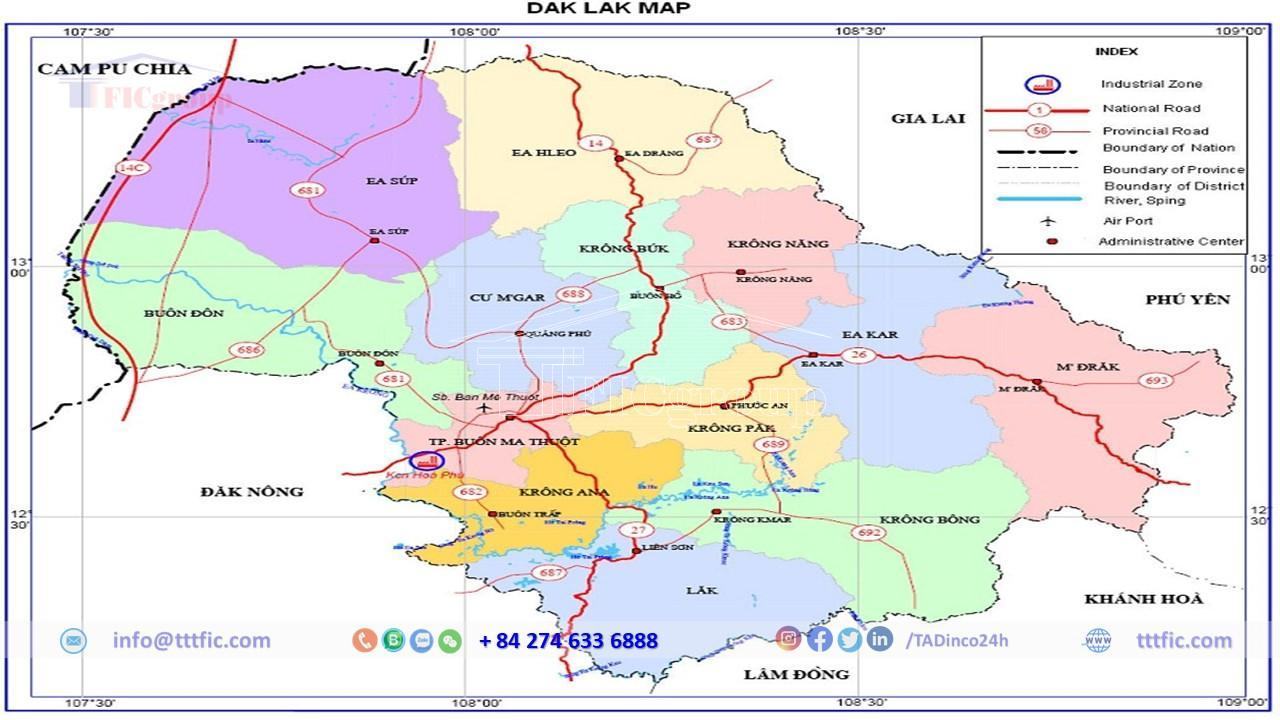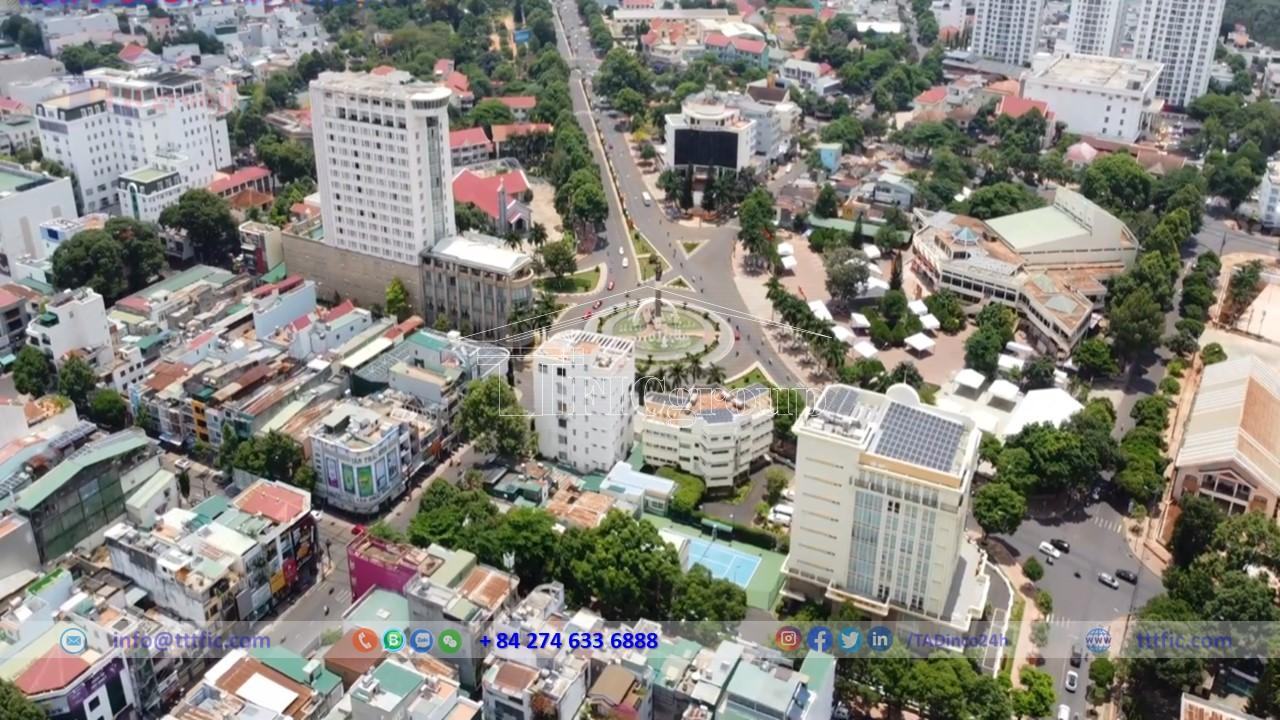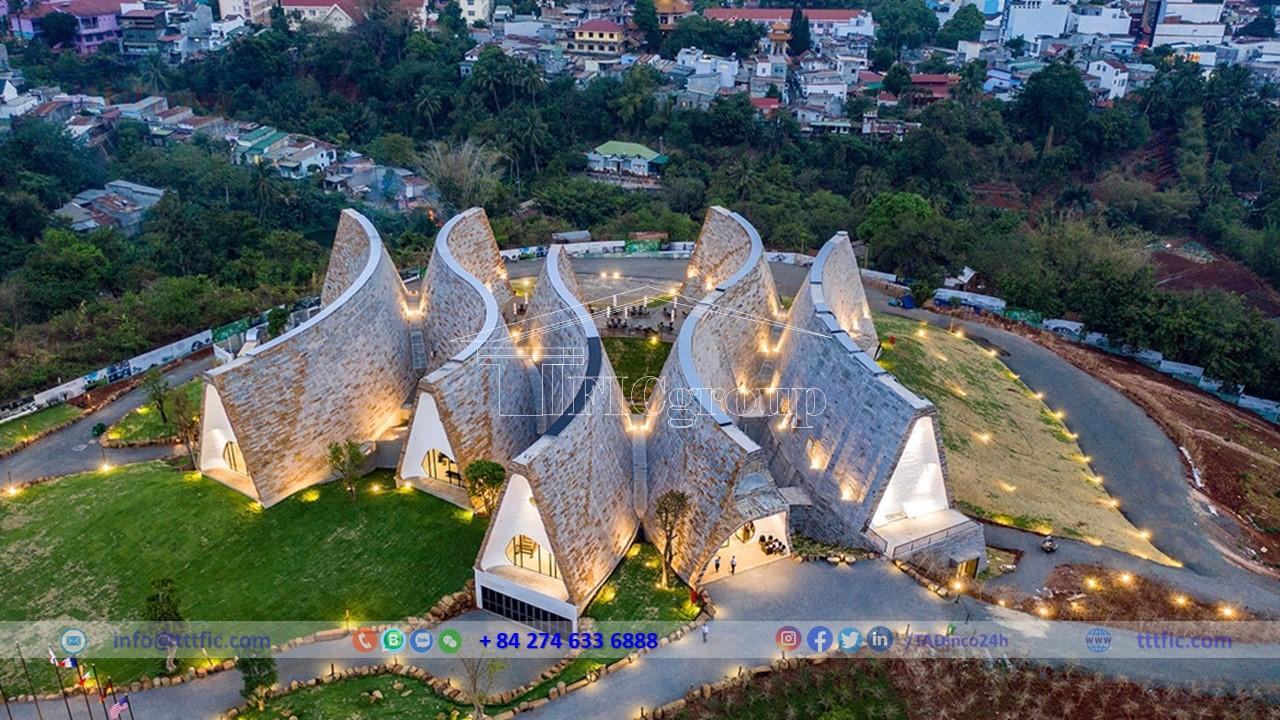
Phu Xuan Industrial Zone - Dak Lak
- Investor: DPV Dak Lak Investment Joint Stock Company
- Price: Updating
- Area: 338 Ha
Dak Lak Province, located in the heart of the Central Highlands, is a rapidly developing province within the Vietnam-Laos-Cambodia development triangle. Buon Ma Thuot City, a first-grade municipality, is designated as the central urban area. The province ranks 4th nationwide in natural area and 10th in population, with 60% of the population of working age. Over 40% of its land area consists of basaltic soil.
With a rainy season from May to October and a dry season from November to April, Dak Lak experiences two distinct seasons. In 2019, the province’s population reached 1.9 million, with a GRDP of 78,686 billion VND and a per capita GRDP of 41.00 million VND. The GRDP growth rate was 7.82%.
The capital city, Buon Ma Thuot, is located 1,410 km from Hanoi, 520 km from Da Nang, and 350 km from Ho Chi Minh City. Dak Lak province was divided on November 26, 2003, creating Dak Lak and Dak Nong as separate provinces.
Dak Lak nurtures the Gong culture, which UNESCO recognizes as an intangible cultural heritage of humanity. Evaluators see the province, with its abundant resources, young workforce, and strong consumer market, as ripe for foreign investment and economic growth.

Dak Lak province is located in the heart of the Central Highlands, at the source of the Serepok River system and partially along the Ba River. The province has the following geographical features:
The average elevation ranges from 400 to 800 meters above sea level, with the highest peak being Mount Chu Yang Sin, towering at 2,442 meters above sea level. This mountain is also the highest peak in Dak Lak.
However, due to historical division and merger conditions, there is a disputed area of 9,300 hectares between Ea Trang commune (M’Drak district, Dak Lak province) and Ninh Tay commune (Ninh Hoa town, Khanh Hoa province) for the administrative boundary delineation between the two provinces.
Dak Lak features a gradually descending terrain from southeast to northwest. It is located in the western part and at the end of the Truong Son Range, comprising a vast plateau with gentle slopes and relatively flat topography interspersed with low-lying plains along the main rivers.
The climate of the province is divided into two sub-regions.
The weather is distinctly characterized by two seasons: the rainy season and the dry season.
The forests in Dak Lak have the largest area and reserves in the country, containing numerous species of precious and rare timber as well as unique specialty trees that possess both economic and scientific value. Due to favorable conditions, forest regeneration occurs with a relatively high density.
Dak Lak province possesses various mineral resources with different reserves:
The river and stream system in the province is quite abundant and evenly distributed. However, due to the steep terrain, water storage capacity is limited, and small streams almost run dry during the dry season.
In addition to the abundant river and stream system, there are also numerous natural and artificial lakes in the province, such as Lake Lak, Ea Kao, Buon Triet, and Ea So.

Dak Lak’s economy primarily relies on the production and export of agricultural and forestry products. The province has potential for ecotourism. In the 2017 Provincial Competitiveness Index ranking in Vietnam, Dak Lak ranked 31st out of 63 provinces and cities.
Dak Lak is the largest exporter of coffee in the country, with an area of 182,343 hectares and an annual harvest of over 400,000 tons, accounting for 40% of the national output. The province also cultivates cotton, cocoa, rubber, and cashews, which are major crops in Vietnam. Additionally, it is known for the cultivation of various fruit trees, including avocado, durian, rambutan, and mango.
As of April 1, 2019, Dak Lak province had a population of 1,869,322, with a population density of 135 people per square kilometer. The urban population accounted for 24.7% of the total population, while the rural population made up 75.3%. The male population was 942,578, and the female population was 926,744. The natural population growth rate varied by locality, with an overall increase of 0.75 ‰. Dak Lak is the most populous province in the Central Highlands, with over 1.8 million residents. The urbanization rate, as of 2023, reached 25.76%.
As of April 1, 2019, there were 13 different religions in Dak Lak province, with a total of 577,920 followers. Catholicism had the highest number of followers, with 265,760, followed by Protestantism (181,670), Buddhism (126,660), and Caodaism (3,572). In addition, there were followers of Hoa Hao Buddhism (162), Islam (65), Buu Son Ky Huong (23), Tinh Do Cu Si Phat Hoi Vietnam (3), Bahá’í (2), and smaller groups like Minh Su Dao, Minh Ly Dao, and Dao Tu An Hieu Nghia, each with one adherent.
Furthermore, as of April 1, 2009, Dak Lak province was home to 47 ethnic groups and foreign residents. The majority ethnic group was the Kinh, with a population of 1,161,533, followed by the Ede (298,534), the Nung (71,461), and the Tay (51,285). Other ethnic groups included the Mnong (40,344), the Mong (22,760), the Thai (17,135), and the Muong (15,510).
Dak Lak embraces a rich cultural heritage, encompassing age-old oral traditions like Dam San and Xinh Nha with their extensive repertoire. Moreover, distinctive languages spoken by the Ede and Mnong communities contribute to the region’s cultural diversity.
Adding to this vibrant cultural tapestry are remarkable musical instruments like stone xylophones, T’rung, and K’lông Pút, which enrich the cultural heritage of the region.
Dak Lak is renowned as a birthplace of the Gong culture in the Central Highlands, acknowledged by UNESCO as a priceless intangible cultural heritage of humanity.
Furthermore, the province plays host to remarkable festivals, including the New Rice Celebration, Funeral Ceremony, Buffalo Fighting Festival, Water Wharf Offering Ceremony, Elephant Racing Festival, Gong Festival, Coffee Festival, and Durian Festival. People celebrate these festivities each year as integral parts of the local cultural heritage.
Using transitional words, the sentence can be rewritten as follows:
“Featuring sites like Lac Giao Temple, Sac Tu Khai Doan Pagoda, and Buon Ma Thuot Prison, Dak Lak’s history is rich and accessible. Moreover, places like Bao Dai’s Summer Palace, the Bishop’s House, Dak Tur Cave, and Yang Prong Tower further enhance its historical narrative.”

“Dak Lak’s tourism potential, with diverse landscapes, ecotourism sites, and cultural traditions, is vast. Highlights include Lake Lak, Gia Long Waterfall, Buon Don complex, and Chu Yang Sin National Park.”